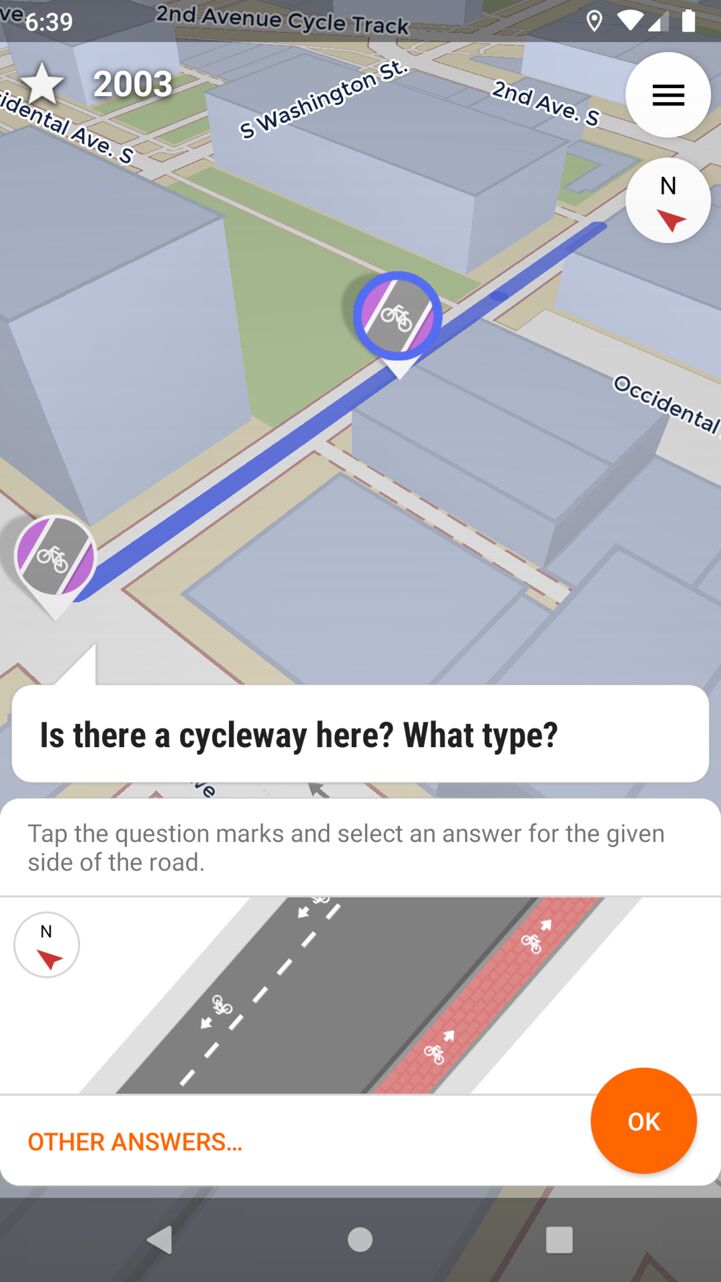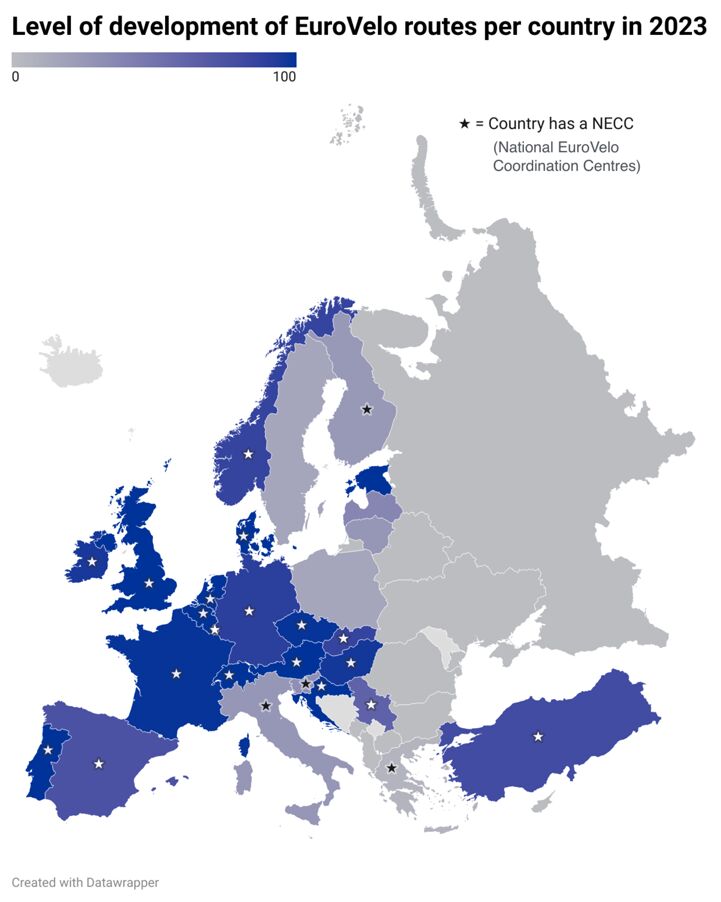Wie können Sie EuroVelo unterstützen? Helfen Sie uns, Daten zu sammeln!
Bei der Planung einer Reise finden viele Radfahrer es nützlich, Zugang zu Routendaten zu haben. Was werden sie dort vorfinden? Getrennte Radinfrastruktur oder mit Autos geteilte Routen? Perfekt asphaltierte Radwege oder Schotterstraßen durch den Wald? Detaillierte Routendaten ermöglichen es, die Reiseroute weise zu wählen, je nach der Art des Erlebnisses, das man sucht, und dem Fahrrad, das man benutzt.
Aber detaillierte Routendaten sind nicht so einfach zu bekommen, wenn es um ein 90.000 km langes Radwegenetz geht, das sich über mehr als 38 Länder erstreckt! Wir haben eine Methode zur Erfassung von GIS-Daten von Rad- und Erkundungsrouten – die European Certification Standard (ECS)-Methodologie – aber es würde zu viel Zeit und Kosten erfordern, sie derzeit für Freiwillige zu öffnen.

ECF analysiert seit 2022 Fahrraddaten von OSM mit dem QECIO-Tool, quantifiziert die verschiedenen Arten von Fahrradinfrastruktur in europäischen Ländern und Regionen und liefert Statistiken zu Oberflächentypen von Radwegen und der Nutzung von Gegenverkehrs-Radwegen. Das kommende QECIO 3.0 wird eine Analyse der OSM-Fahrraddaten mit Fokus auf EuroVelo-Routen beinhalten und eine neue Welt der Möglichkeiten eröffnen!
Wie können Sie also zu EuroVelo beitragen? Werden Sie ein OpenStreetMap-Beitragender in Ihrer Region! Überprüfen Sie, wie EuroVelo-Routen in die Karte aufgenommen sind, ob ihre Streckenführung mit den Tracks übereinstimmt, die Sie auf www.EuroVelo.com herunterladen können, und mit der Beschilderung vor Ort und ob die Hauptinfrastrukturparameter der Route korrekt kartiert sind: Routenelemente, Oberflächen, potenzielle Hindernisse... Schnappen Sie sich dann Ihr Fahrrad und Ihr Smartphone und beginnen Sie, fehlende Merkmale zu kartieren!
Aber wie funktioniert das und wo fängt man an? In die Welt der Karten und GIS-Daten einzutauchen, mag beängstigend klingen, aber OpenStreetMap ist eine einladende Gemeinschaft, voller Menschen, die Hilfe und Anleitung bieten können und die unterhaltsame und intuitive OSM-Mapping-Apps entwickelt haben. Hier sind einige Links, um Ihnen den Einstieg zu erleichtern!
- Anfängerleitfaden für OpenStreetMap
- OpenStreetMap Wiki – schauen Sie sich die EuroVelo-Seite an und verstehen Sie, wie man taggt
- Erstellen Sie Ihr Konto
- OpenStreetMap Community Forum – stellen Sie der Community Ihre Fragen
- StreetComplete – für schnelle Bearbeitungen der Karten unterwegs

Um mehr über die Entwicklungsstufen spezifischer EuroVelo-Routen zu erfahren, besuchen Sie die Stufen-Seiten (Beispiel für EuroVelo 15 – Rhein-Radweg, der 2020 nach einer genauen Routenuntersuchung gemäß der ECS-Methodologie zertifiziert wurde) oder die Länder-nach-Routen-Seiten (Beispiel für EuroVelo 19 – Maas-Radweg, eine weitere gut entwickelte EuroVelo-Route). Die Kartenlegende erklärt die Bedeutung der einzelnen Farben.
Wie im EuroVelo-Entwicklungsstatusbericht 2022-2023 erklärt, sind nicht alle EuroVelo-Routen im Jahr 2024 vollständig entwickelt und beschildert, aber wir streben bis 2030 ein sicheres und kontinuierliches europäisches Radwegenetz an. Je mehr Daten wir über die Routen sammeln können, desto besser ist es für die Interessenvertretung auf allen Ebenen. Lassen Sie uns dies zu einer kollektiven Anstrengung auf dem gesamten Kontinent machen!
Beachten Sie, dass Sie EuroVelo auch durch eine finanzielle Spende unterstützen können. Unterstützen Sie uns, Europa mit dem Fahrrad zu verbinden!
Dieser Artikel wurde ursprünglich auf Englisch verfasst und mit Hilfe künstlicher Intelligenz ins Deutsche übersetzt.